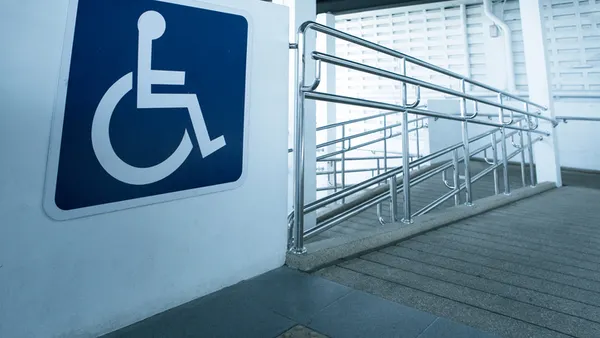Dive Brief:
- Usually in business, finishing among the top three is a good thing. But it was a dubious distinction in 2022 for the construction industry, which had the third-highest number and cost of legal filings among all U.S. business sectors, according to a recent report from business credit scoring agency Creditsafe.
- Construction businesses had 212,582 legal filings entered against them last year, resulting in cumulative losses exceeding $3.36 billion, according to Creditsafe’s State of Credit Risk 2022 report released in February.
- Meanwhile, the sector finished first in another aspect of notoriety: Construction firms had the worst average credit score, which garnered a collective label of posing a “moderate risk” to other business partners, according to the report. Simultaneously, 41% of construction companies were categorized as posing “very high risk,” a distinction that also put the sector among the top three riskiest of all industries.
Dive Insight:
The report didn’t completely throw construction under the bus among its peers. Indeed, counter to the widespread reputation construction firms have for paying suppliers and subs late, the Creditsafe report found that the sector actually had one of the best track records of all industries for timely payments.
Construction’s Days Beyond Terms score, or the number of days beyond an agreed-to payment period, such as 30 days, that a check was issued, came in at just 18, and tied with manufacturing. (A lower score means faster payment.) Only public administration (15) and agriculture, forestry and fishing (17) were better.
The retail and transportation industries were actually the slowest payers, each with DBT scores of 23, while the professional, technical and scientific services segment posted a score of 21. Finance, insurance and real estate came in at 20 days, while wholesale trade was at 19.
Overall, the business credit watcher, which claims to predict 70% of bankruptcies up to 12 months in advance, struck an ominous tone in general toward American businesses during the first quarter of 2023.
“The impending recession has most businesses scared about how it will impact them and wondering if they can weather the storm,” the report said. “Our data indicates you have good reason to worry.”
The report stated that 93% of American businesses had a credit limit lower than $10,000, while just 2% had credit above $50,000 in 2022 as interest rates rose and capital became more scarce.
“It seems that higher credit limits were much harder to secure,” the report said.














